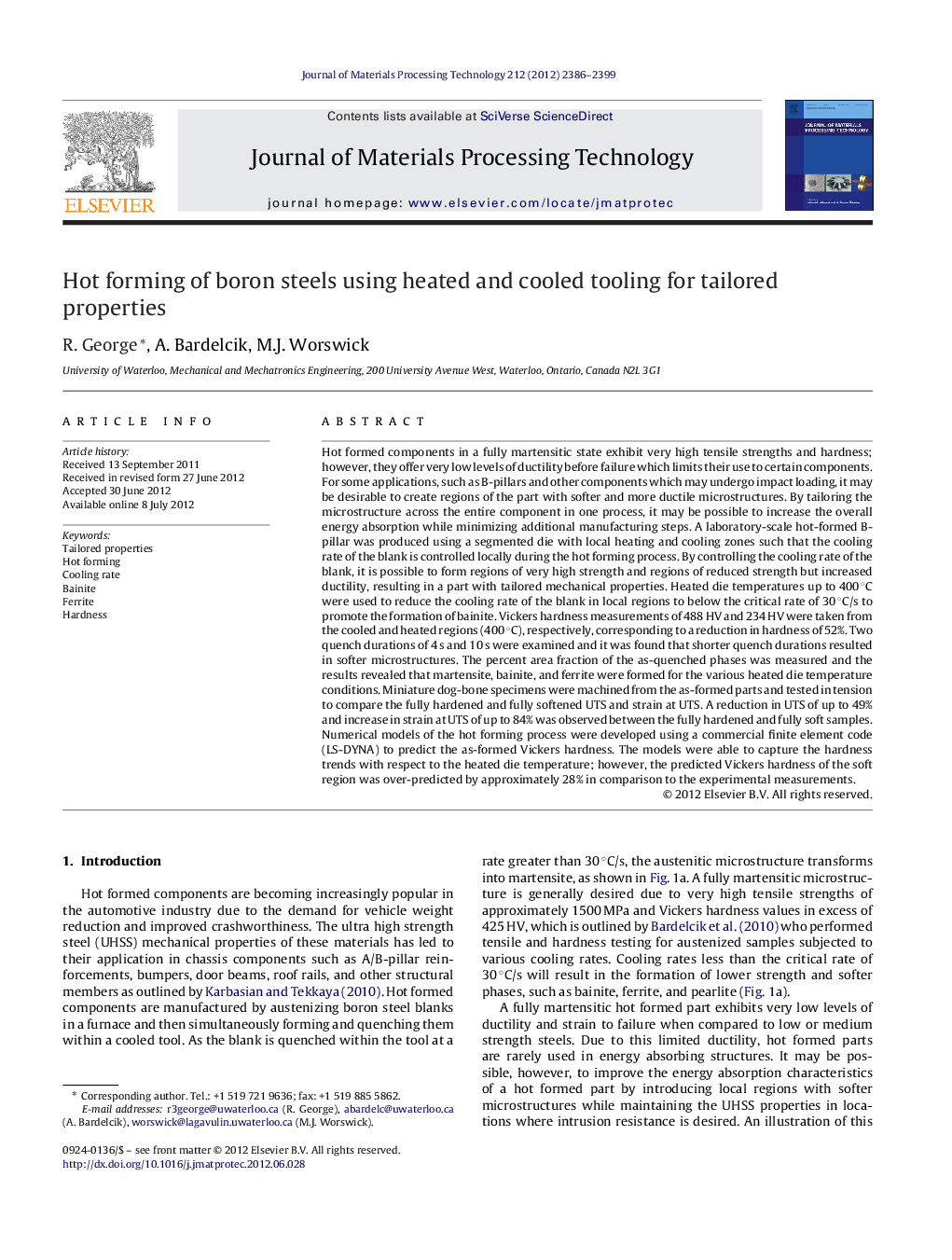| کد مقاله | کد نشریه | سال انتشار | مقاله انگلیسی | نسخه تمام متن |
|---|---|---|---|---|
| 798185 | 903221 | 2012 | 14 صفحه PDF | دانلود رایگان |

Hot formed components in a fully martensitic state exhibit very high tensile strengths and hardness; however, they offer very low levels of ductility before failure which limits their use to certain components. For some applications, such as B-pillars and other components which may undergo impact loading, it may be desirable to create regions of the part with softer and more ductile microstructures. By tailoring the microstructure across the entire component in one process, it may be possible to increase the overall energy absorption while minimizing additional manufacturing steps. A laboratory-scale hot-formed B-pillar was produced using a segmented die with local heating and cooling zones such that the cooling rate of the blank is controlled locally during the hot forming process. By controlling the cooling rate of the blank, it is possible to form regions of very high strength and regions of reduced strength but increased ductility, resulting in a part with tailored mechanical properties. Heated die temperatures up to 400 °C were used to reduce the cooling rate of the blank in local regions to below the critical rate of 30 °C/s to promote the formation of bainite. Vickers hardness measurements of 488 HV and 234 HV were taken from the cooled and heated regions (400 °C), respectively, corresponding to a reduction in hardness of 52%. Two quench durations of 4 s and 10 s were examined and it was found that shorter quench durations resulted in softer microstructures. The percent area fraction of the as-quenched phases was measured and the results revealed that martensite, bainite, and ferrite were formed for the various heated die temperature conditions. Miniature dog-bone specimens were machined from the as-formed parts and tested in tension to compare the fully hardened and fully softened UTS and strain at UTS. A reduction in UTS of up to 49% and increase in strain at UTS of up to 84% was observed between the fully hardened and fully soft samples. Numerical models of the hot forming process were developed using a commercial finite element code (LS-DYNA) to predict the as-formed Vickers hardness. The models were able to capture the hardness trends with respect to the heated die temperature; however, the predicted Vickers hardness of the soft region was over-predicted by approximately 28% in comparison to the experimental measurements.
Journal: Journal of Materials Processing Technology - Volume 212, Issue 11, November 2012, Pages 2386–2399